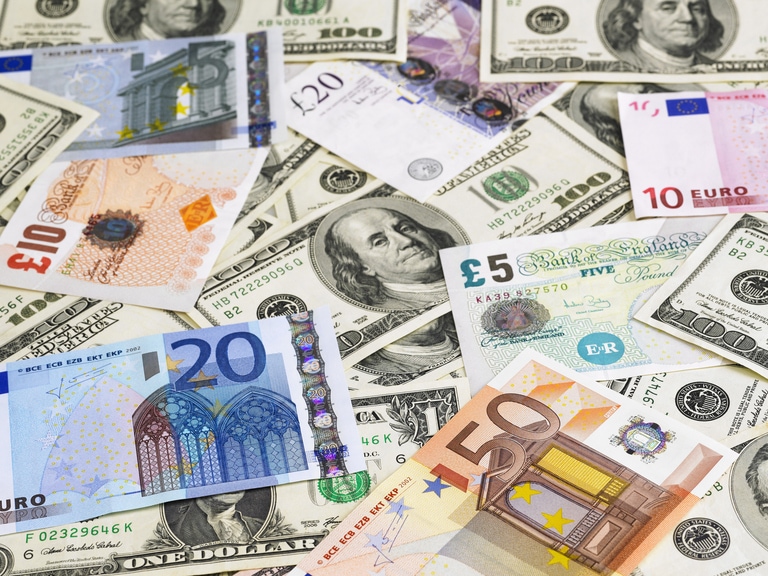It’s been another record-breaking week for the FTSE 100, although we’ve slipped back from the highs, weighed down by underperformance in the banking sector, which has acted as a bit of a deadweight.
Europe
We’ve also seen weakness in the energy sector with BP and Shell acting as a drag, on the back of a 3% decline in oil prices.
Barclays shares slid back this week on the back of a set of disappointing numbers, while NatWest Group has seen an underwhelming reaction to a strong set of full-year results, an increase in the dividend and a share buyback. Given the share price reaction today, it seems there’s just no pleasing some people even accounting for the disappointment over its guidance, which appears to be being blamed for today’s weakness.
In Q4, profits rose to an impressive £1.26bn, a big increase on the £187m in Q3, taking full year profits to £3.34bn, up from £2.95bn a year ago. Total impairments for the year rose to £337m. As far as the internals are concerned the higher interest rate environment saw net interest margin increase from 2.99% in Q3 to 3.2% in Q4, bringing NIM year to date up to 2.85% from 2.30% a year ago. While there appears to be some disappointment over its future guidance in this regard, the guidance was predicated on a UK base rate of 4%. This comes across as unduly pessimistic given that we are likely to see another 25bps at the very least in March, potentially pushing NIM higher.
The numbers certainly aren’t as dire as today’s share price declines would suggest, not to mention a dividend yield of over 4.5%. The bank proposed a final dividend of 10p as well as a share buyback program of £800m in the first half of 2023, taking the total amount paid to shareholders £5.1bn, or 53p per share, which is good news for the UK government which still holds a 48% stake in the bank. This equates to a windfall for the UK government of £2.25bn, on top of the ordinary tax take which includes the bank levy and corporation tax.
On the plus side, Segroshares have topped the index despite reporting adjusted pre-tax profit of £386m an increase of 8.4%, but which came in below market consensus expectations. The company which rents warehouse space continues to be in high demand to a range of companies, and which saw a 6.7% rise compared to 4.9% a year ago. The miss in profits appear to be down to a fall in the value of the company’s property portfolio due to higher interest rates in the second half of the year, although the outlook remains solid.
US
US markets have continued to struggle, with the Nasdaq acting as the biggest drag as yields on US bonds remain near their highs of the week.
At the end of last year, agricultural equipment maker Deere saw annual profits come in at $7.13bn, while revenues for the year rose to $52.58bn, a rise of 19%, as the company managed to pass on price increases to its clients. The company also upped its forecast for 2023 profits to between $8bn and $8.5bn, on the back of strong demand for tractors, from farmers who are getting higher prices for their crops. Today’s Q1 numbers have seen Deere boost its profits forecast to between $8.75bn to $9.25bn, after posting a 34% increase in Q1 sales of $11.40bn and profits of $6.55.
Tesla saw a big decline yesterday after it announced a recall of 362,000 of its cars due to a software glitch in its automated driving technology that may increase the risk of a crash, potentially causing it to run through yellow caution lights. Moderna shares have slipped back sharply after announcing mixed results for its MRNA flu vaccine candidate.
FX
The US dollar has continued to climb across the board after yesterday’s hawkish interventions by Cleveland Fed president Loretta Mester and St Louis Fed president James Bullard. The markets' cosy consensus of a 25bps rate hike in March has been upended by these interventions along with the resilience seen in this week’s retail sales and inflation data. The strength of the US dollar along with future interest rate expectations is likely to continue to drive market direction, with the strength of the greenback likely to be the main driver of risk appetite.
The pound has also continued to come under pressure despite a better-than-expected retail sales number in January, which saw a rebound of 0.5%, confounding expectations of a 0.3% decline, although the downward revisions to December numbers took some of the gloss off.
Hawkish comments from ECB governing council member Isabel Schnabel who said that the ECB needed to do much more on tackling inflation due to elevated wage growth has also helped to add a little more pep to the euro, and which has helped the single currency perform better than most against the US dollar this week.
The Japanese yen has been the worst performer this week against the US dollar, sliding over 2% on the expectation that any change in Japanese monetary policy is unlikely to happen before Kuroda’s departure in April. Whether that is a safe assumption to make is anyone’s guess, but given that inflation in Japan is already above 4% it does seem a dangerous conclusion to draw.
Commodities
Rising inventory levels, along with a strong US dollar have weighed on crude oil prices this week, as the choppiness of the last three weeks has continued. We appear to be stuck in a range for the moment, the top of which is just below $88 on Brent with the bottom currently at $79.
Gold prices have continued to slide and have more or less given up all of their gains this year, as the stronger US dollar and higher yields weigh on prices. A move below support at $1,813 would push the yellow metal into negative territory for the year.






